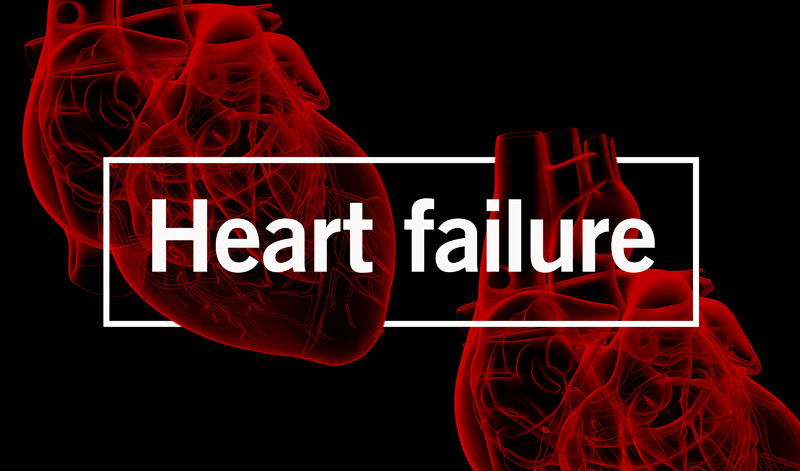We all know that heart failure is a chronic problem that affects thousands of individuals globally. It usually happens when the human heart cannot pump blood correctly, leading to several issues and symptoms. To fully appreciate the complexity of heart failure, it is imperative to examine its several stages, each with distinct characteristics and management implications for patients.
This comprehensive blog guide will discuss the four stages of heart failure, shedding light on their symptoms, diagnostic criteria, how to consult cardiologists and treatment options.
Stage I: Heart Failure at Risk
The first stage of heart failure, often termed “Heart Failure at Risk” or “Stage A,” involves individuals who are at an increased risk of developing heart failure but do not exhibit any signs or symptoms. This stage is typically characterised by the presence of risk factors that can contribute to the development of heart failure.
Risk Factors:
- Hypertension: High blood pressure strains the heart, leading to increased workload and potential damage to the heart muscle over time.
- Diabetes: Uncontrolled diabetes can damage blood vessels and the heart, contributing to heart failure.
- Coronary artery disease: Narrowing or blockage of coronary arteries can reduce blood flow to the heart muscle, leading to damage.
- Valvular heart disease: Malfunctioning heart valves can disrupt the normal flow of blood, affecting the heart’s pumping ability.
Diagnostic Criteria:
- Identification of risk factors through comprehensive medical history and physical examination.
- Monitoring and managing risk factors, including blood pressure control, blood sugar management, and lifestyle modifications.
Treatment Options for Stage A:
- Lifestyle modifications: Encouraging a heart-healthy lifestyle, including regular exercise, a balanced diet, and smoking cessation.
- Medications: Depending on specific risk factors, medicines such as antihypertensives or lipid-lowering drugs may be prescribed.
Stage II: Structural Heart Disease Without Symptoms
It is often called “Structural Heart Disease Without Symptoms” or “Stage B”. It is characterised by the presence of structural heart abnormalities without noticeable signs or symptoms of heart failure.
Structural Abnormalities:
- Left ventricular hypertrophy
- Valve abnormalities
- Previous myocardial infarction (heart attack)
Diagnostic Criteria
- Echocardiography: Imaging technique to assess the structure and function of the heart.
- Electrocardiogram (ECG): Records the heart’s electrical activity, identifying abnormalities.
- Cardiac MRI: Provides detailed images of the heart’s structure and function.
Treatment Options for Stage B:
- Prescription of medications to manage underlying conditions, such as beta-blockers or ACE inhibitors.
- In some cases, procedures like angioplasty or valve repair may be necessary.
Stage III: Heart Failure With Symptoms
Generally, it is known as “Heart Failure With Symptoms” or “Stage C,” which represents a progression of the condition with the onset of noticeable symptoms and limitations in physical activity.
What are the Symptoms?
- Fatigue and weakness.
- Shortness of breath, especially during exertion.
- Swelling in the legs, ankles, and abdomen (oedema).
- Persistent coughing or wheezing.
- Fluid retention and weight gain.
Process of Diagnosis:
- Clinical evaluation: Assessment of symptoms and physical examination.
- Imaging studies: Echocardiography, MRI, or CT scans to evaluate the extent of heart damage.
- Blood tests measure B-type natriuretic peptide (BNP) levels, which rise with heart failure.
Treatment Options:
- Medications: Introduction or adjustment of medications, such as diuretics, beta-blockers, ACE inhibitors, and angiotensin receptor blockers.
- Lifestyle modifications: Strict adherence to a low-sodium diet, fluid restriction, and regular exercise within individual capacity.
- Device therapy: Implantation of devices like pacemakers or defibrillators in some cases.
Stage IV: Advanced or End-Stage Heart Failure
The final stage, often termed “Advanced or End-Stage Heart Failure” or “Stage D,” is characterized by severe symptoms and significant limitations in physical activity, even at rest.
Basic Symptoms:
- Severe fatigue and weakness
- Marked shortness of breath at rest
- Inability to carry out daily activities without discomfort
- Recurrent hospitalizations despite optimal medical therapy
Diagnostic Criteria:
- Continued clinical evaluation and monitoring of symptoms.
- Advanced imaging studies to assess the extent of heart damage.
- Evaluation for heart transplantation or advanced heart failure therapies.
Treatment Options:
- Heart transplantation: For eligible candidates, heart transplantation may be considered.
- Mechanical circulatory support: Ventricular assist devices (VADs) to assist or replace heart function.
- Palliative care: Focus on symptom relief and improving quality of life.
The Bottom Line!
Understanding the stages of heart failure is crucial for early detection, intervention, and optimal management of this chronic condition. From identifying risk factors to addressing structural abnormalities and managing symptoms, healthcare professionals play a vital role in guiding patients through the stages of heart failure.
Ongoing research and advancements in medical therapies offer hope for improved outcomes and a better quality of life for heart failure patients. Consulting with healthcare professionals at the German Health Centre can provide personalised guidance, taking into account individual health conditions and goals.

